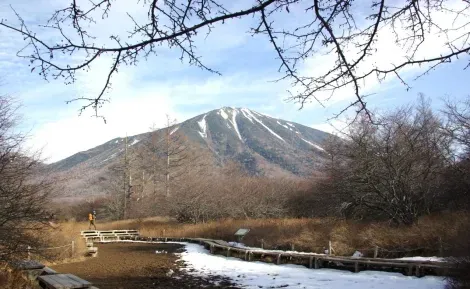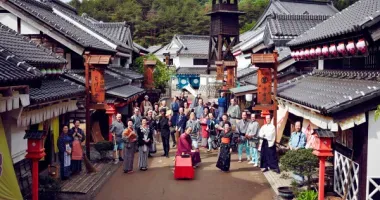Nikko Futarasan Shrine 二荒山神社
Divine Mountain
Futarasan is not the most impressive shrine in Nikko, but is the source of its religious importance. Futarasan, a place where the religions of Japan meet ...
Futarasan Jinja was founded by the Buddhist monk Shodo Shonin. During the eighth century he explored the area of Nikko and founded the temple of Rinno-ji and Futarasan shrine. From this period remains the bridge Shinkyo, the sacred bridge that marks the entrance to Nikko.
The heart of an ancient cult
Today Futarasan is somewhat overshadowed by the magnificence of the mausoleums dedicated to two Shoguns: the toshogu shrine of Ieyasu, and the Taiyuin of Iemitsu. Yet this Futarasan is the religious heart of Nikko. It is in this shrine that the surrounding mountain deities are worshiped, the first of which is Mount Nantai. The name of the shrine ("two rough mountains") refers to it.
Although it is associated with the Buddhist temple Rinnoji, Futarasan jinja (shrine) preserves an ancient Shinto practice: the worship of mountains. The mountains, frightening guardian spirits, providers of life thanks to the nearby flowing rivers, have been worshiped in the islands since Neolithic times and long remained the main deities, like Mount Fuji. When Buddhism entered the area in the eighth century, it naturally integrated these ancestral cults.
A shrine in the heart of a broad ensemble
It is the mountain behind the Futarasan jinja that is the heart of the shrine, more than the buildings below, which are used for rituals and to house the mikoshi (portable shrines paraded during festivals). The shrine is built in the same luxurious style as the neighboring mausoleums, and its entrance is marked by a majestic bronze torii (sacred gate) leading to Toshogu.
The rest of the shrine is marked by cryptomeria (Japanese cedar) forming majestic pillars evoking torii created by nature. The bravest can try to reach the altars lost on the slopes of Mount Nantai, far behind the main shrine.
It is towards Futarasan Jinja that monthly religious holidays that mark the life of the shrine are held. Many of these festivals are not very known, except the very famous Yayoi Matsuri in April. During this festival, carts bring in procession portable altars dedicated to the gods of the mountains and surrounding communities, as a sign of respect to the main deity, Mount Nantai. Even today, the god residing in Mount Nantai continues to be the subject of popular fervor.























